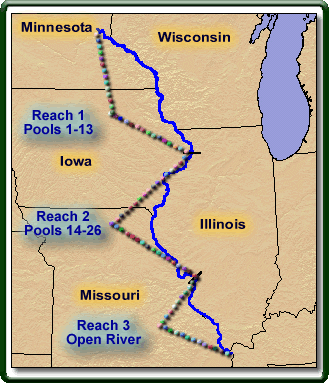Abundance and Distribution of Plant Foods Used by Migratory Waterfowl on Selected Pools of the Upper Mississippi River
|
Waterfowl use of the Upper Mississippi River is directly related to their use of a diverse and abundant food resource. Plant material and invertebrates are essential foods for migrating waterfowl. The distribution of birds on the Upper Mississippi River is closely related to shifts in the distribution and abundance of vegetation communities. Changes in the availability of these foods over the years have altered the movement and behavior of waterfowl during migration. Effective management for migrating waterfowl (e.g., placement of areas closed to waterfowl hunting, efforts to reduce human disturbance to feeding waterfowl) requires a knowledge of food distribution and abundance in any given area. |
 |
The goal of this research effort is to estimate the abundance of plant foods used by migratory waterfowl within selected vegetation communities on the Upper Mississippi River. The availability of vegetation communities used by waterfowl was determined by remote sensing technology and incorporated into a geographic information system (GIS). Abundance of foods was determined within each GIS vegetation class from which we will estimate the carrying capacity of vegetation communities.
Carrying capacity is probably the most important variable for evaluating criteria for managing waterfowl "closed areas." Results from this study will be used to guide management for migrating waterfowl on the Upper Mississippi River. This project is a cooperative venture between the Upper Midwest Environmental Sciences Center and the U.S. Fish and Wildlife Service Region 3, Upper Mississippi River National Wildlife and Fish Refuge.
This project was completed September 2001.
Principal Investigator: Kevin Kenow
Page Last Modified: April 3, 2018

